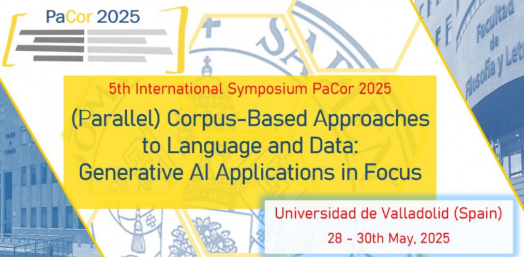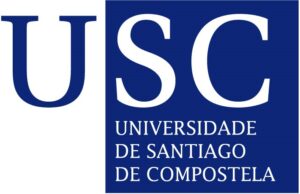| Since the 1980s, corpus linguistics has experienced rapid growth. Although English language corpora continue to dominate research in this field, the development and utilization of corpora in other languages have significantly contributed to the expansion of studies based on corpus linguistics (McEnery and Xiao, 2007). As Álvarez Gil (2019) points out, corpus linguistics offers significant benefits to language learners, as the collected texts used in their studies usually serve as authentic examples of the target language. In this sense, corpus-based materials generally expose students to real-world language use while allowing them to engage with genuine linguistic productions in their learning process. Apart from monolingual corpora, parallel corpora have emerged as a central focus in non-English corpus linguistics, especially because of their crucial role in translation studies and contrastive linguistic research (McEnery and Xiao, 2007). Parallel corpora, defined as “corpora that contain a series of source texts aligned with their corresponding translations” (Malmkjaer, 1998, p. 539), can be used for various applications, including four main areas of focus: contrastive linguistics and translation studies, translation practice, lexicography, and the growing fields of foreign language and translation teaching (Doval and Sánchez, 2019). However, the use of parallel corpora has been somewhat limited in the classroom. Different factors such as the belief that the language in corpora is too complex and difficult for learners, the perception that the tools for searching corpora are not user-friendly, and issues like a lack of awareness among instructors and inaccessible tools for searching parallel corpora contribute to this limitation (Brown, 2017; Doval and Sánchez, 2019). Despite these challenges, parallel corpora hold significant potential and can be used effectively in foreign language teaching with upper-intermediate and advanced students (Doval, 2018). In this sense, the present study aims to present the potential use of the English/Spanish parallel corpus, PaEnS, in an English as a Foreign Language (EFL) classroom for students at an advanced level. To illustrate this approach, the study includes a brief practical case focusing on the teaching of some English idioms and their Spanish equivalents as found in the corpus. The reason for selecting idioms comes from the observation that learners often struggle with these grammar structures, as it is generally impossible to guess what idioms mean from the words they contain (Cambridge International Dictionary of Idioms, 1998). To this effect, ten idioms will be selected according to English Idioms in Use: Advanced (2017), and the students will need to search for instances of these idioms in PaEnS and analyze their Spanish translations. After this, they will categorize the translations based on equivalence, paraphrasing, and omission (Baker, 1992). Finally, they will use ChatGPT to provide alternative Spanish translations, allowing for a comparison between human and AI-generated interpretations. By integrating PaEnS and ChatGPT into idiom instruction in the EFL classroom, students are expected to enhance their comprehension and competence in English idioms while simultaneously learning about and understanding their Spanish translations through data-driven analysis. At the same time, the findings are expected to contribute to increased awareness of how parallel corpora can support language learning, thereby helping bridge the gap between corpus research and pedagogical practice. References Álvarez Gil, F. J. (2019). Enseñanza de pragmática en lengua inglesa a nivel universitario a través del uso de metodología de corpus. DEDiCA. Revista de Educação e Humanidades, 15, 161-172. https://doi.org/10.30827/dreh.v0i15.8057 Baker, M. (1992). In other words: A course book on translation. Routledge. Brown, M. (2017). Using parallel corpora for language learning. Humanising Language Teaching, 19(3). Retrieved January 15, 2025, from https://www.researchgate.net/publication/328094165_Using_Parallel_Corpora_for_Language_Learning/download Cambridge International Dictionary of Idioms (1998). Cambridge University Press. Doval, I. (2018). Corpus paralelos en la enseñanza de lenguas extranjeras: un ejemplo de aplicación basado en el corpus PaGeS. CLINA, 4(2), 65–82. https://doi.org/10.20868/clina.2018.4.2.313 Doval, I., & Sánchez Nieto, M. T. (2019). Parallel corpora in focus: An account of current achievements and challenges. In I. Doval & M. T. Sánchez Nieto, M. T. (Eds.), Parallel corpora for contrastive and translation studies: New resources and applications (pp. 1-15). John Benjamins Publishing Company. https://doi.org/10.1075/scl.90.01dov Malmkjaer, K. (1998). Love thy neighbour: Will parallel corpora endear linguists totranslators? Meta, 43(4), 534–541. https://doi.org/10.7202/003545ar McCarthy, M., & O’Dell, F. (2017). English idioms in use: Advanced (2nd ed.). Cambridge University Press. McEnery, A. M., & Xiao, R. Z. (2007). Parallel and comparable corpora: What are they up to? In G. James, & G. Anderman (Eds.), Incorporating corpora: The linguist and the translator (pp. 18-31). Multilingual Matters |


